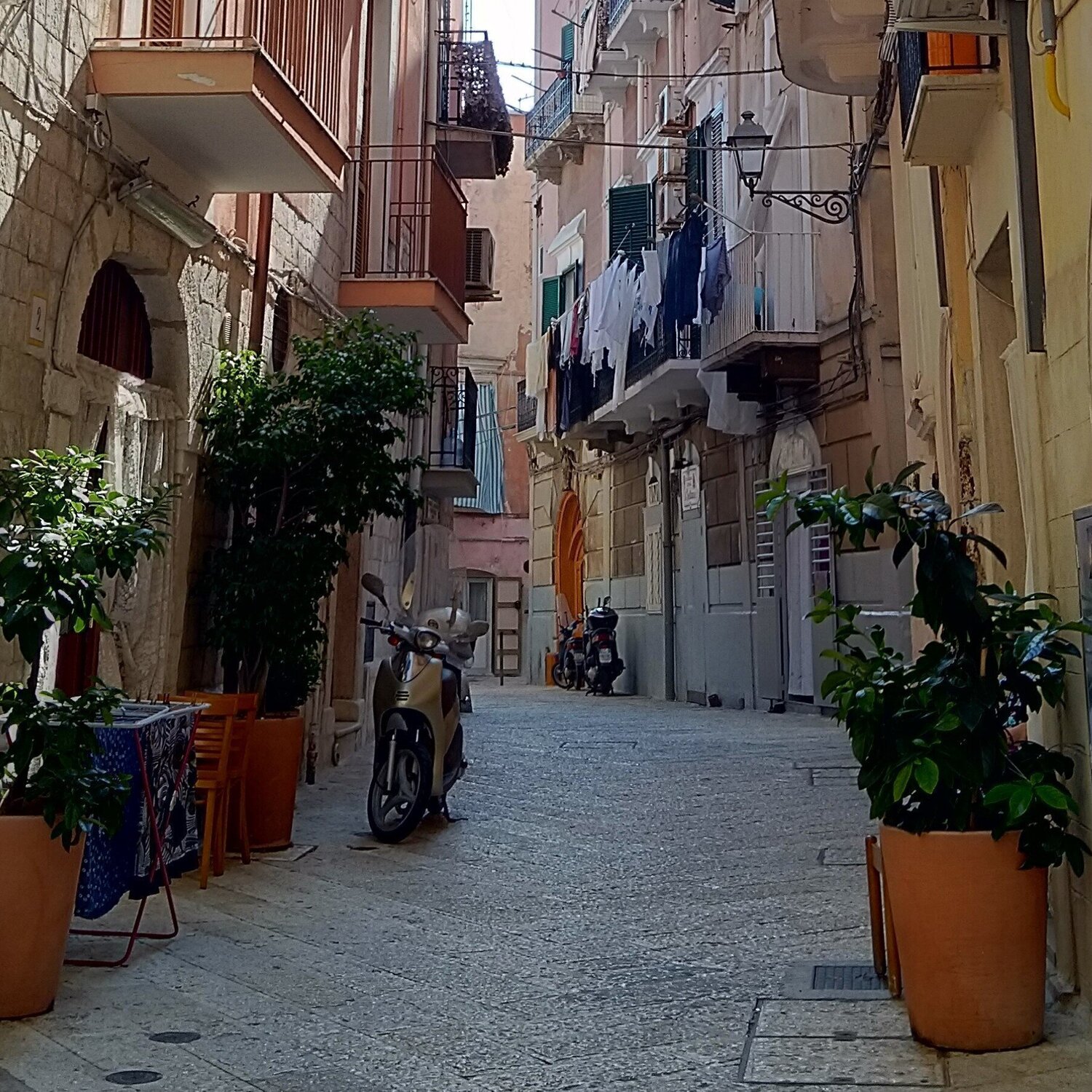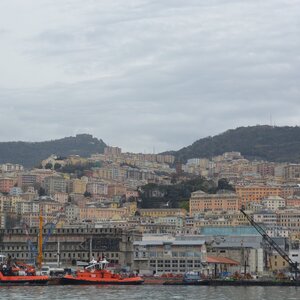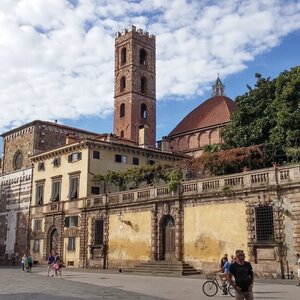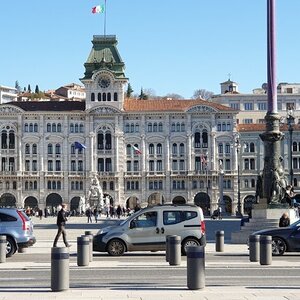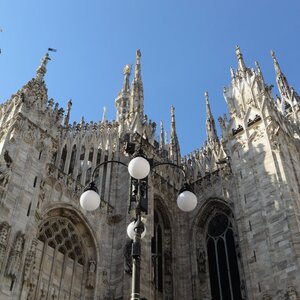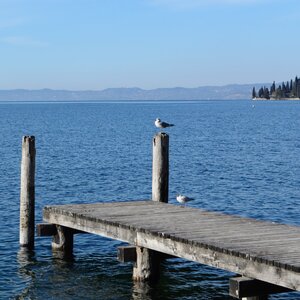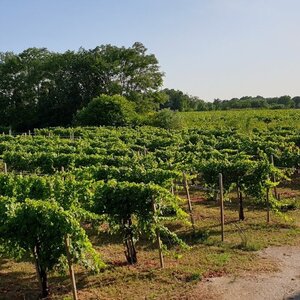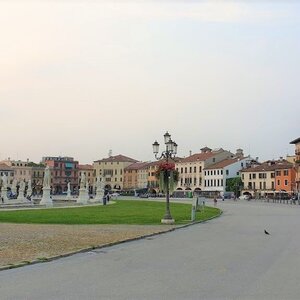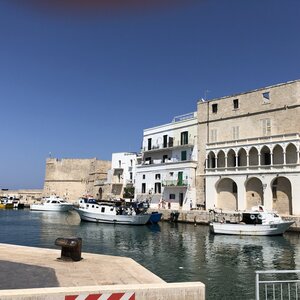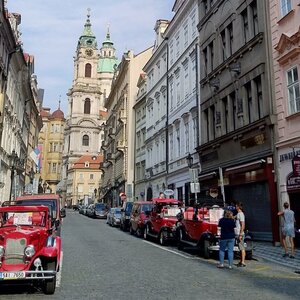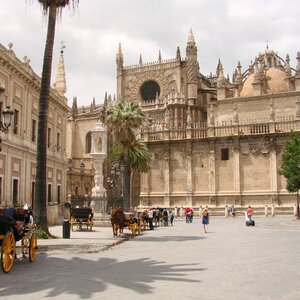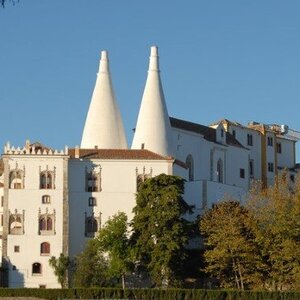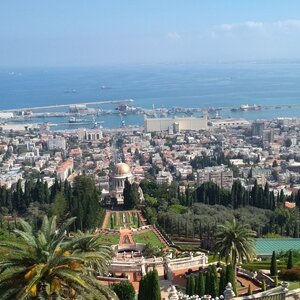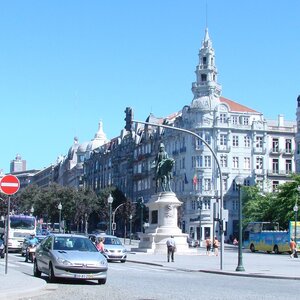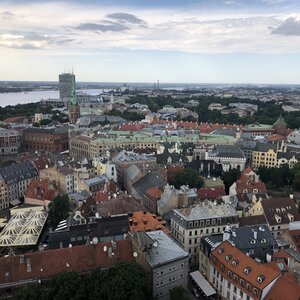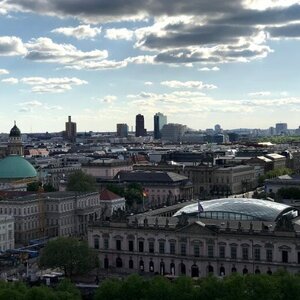A year before my trip to Italy, I was asked which city I would like to visit. All I could think of was to randomly point my finger at a map. And a year later, I almost accidentally ended up in that place for real. In Bari, the capital of Puglia, a region on the «heel» of the Apennine Peninsula.
Walking route in Bari
Bari is not like other cities. The compact and authentic Barri-Vecchia neighborhood with Italians living like a few centuries ago, as well as its complete opposite — Murattiano — is a real work of architectural art. Not for nothing locals say that if Paris had a sea, the city would resemble Bari. If in doubt, just come here. In 1 day you can visit the main sights and a couple of museums, during the break you can get acquainted with the national cuisine of the southern region.
Old Town (Bari Vecchia)
The heart of Bari is the small Old Town, or Bari Vecchia, where iconic sites are concentrated. Tucked away in these narrow streets are over 40 churches, picturesque alleys, bustling cafes and beautiful squares that help to capture the atmosphere of the city. You don’t want to miss a single street or local legend and history.
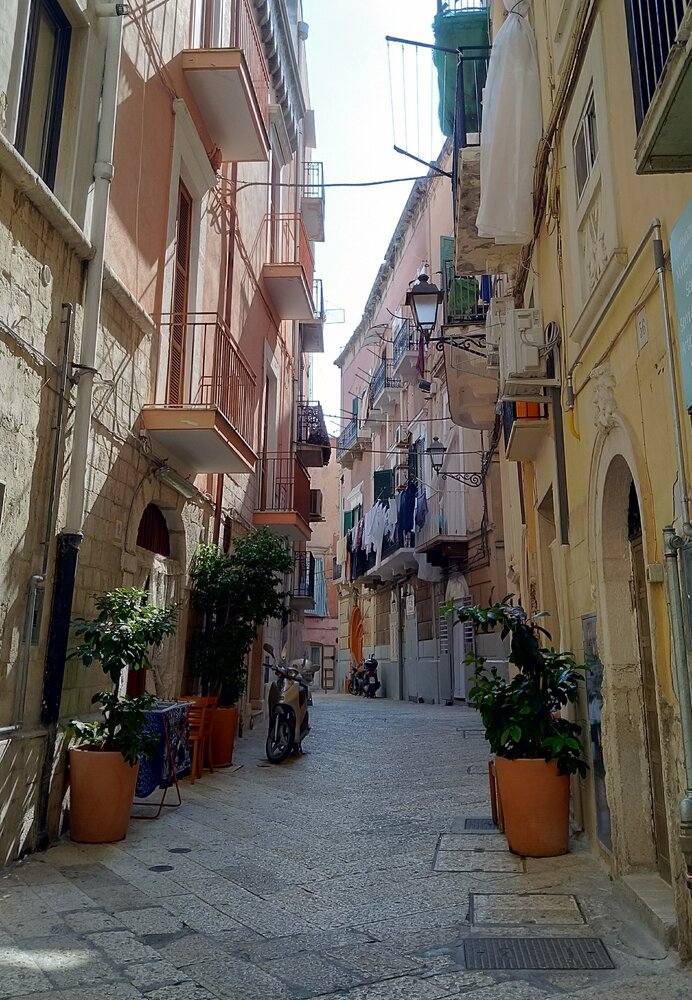

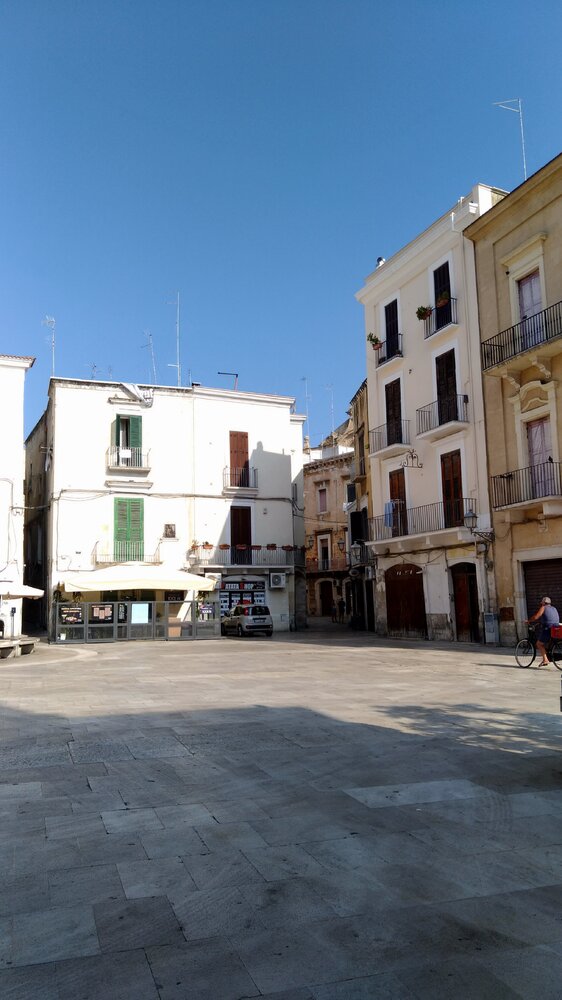
Margherita Theater (Margherita)
The walking route starts at Piazza IV Novembre. On the left side is the Bari Tourist Office, and opposite it is a pink Art Nouveau building: the Margherita Theater on stilts. It was built in 1914. Inside there is an exhibition museum with works by Italian artists.
The Margherita Theater has an interesting history. In Bari there was a ban on the construction of a second theater (the first was the Petruzelli Theater). But the ban applied only to the erection of buildings on land, no one forbade the construction of houses on the water. That is why the theater stands on stilts.
Works: 24 hours a day.
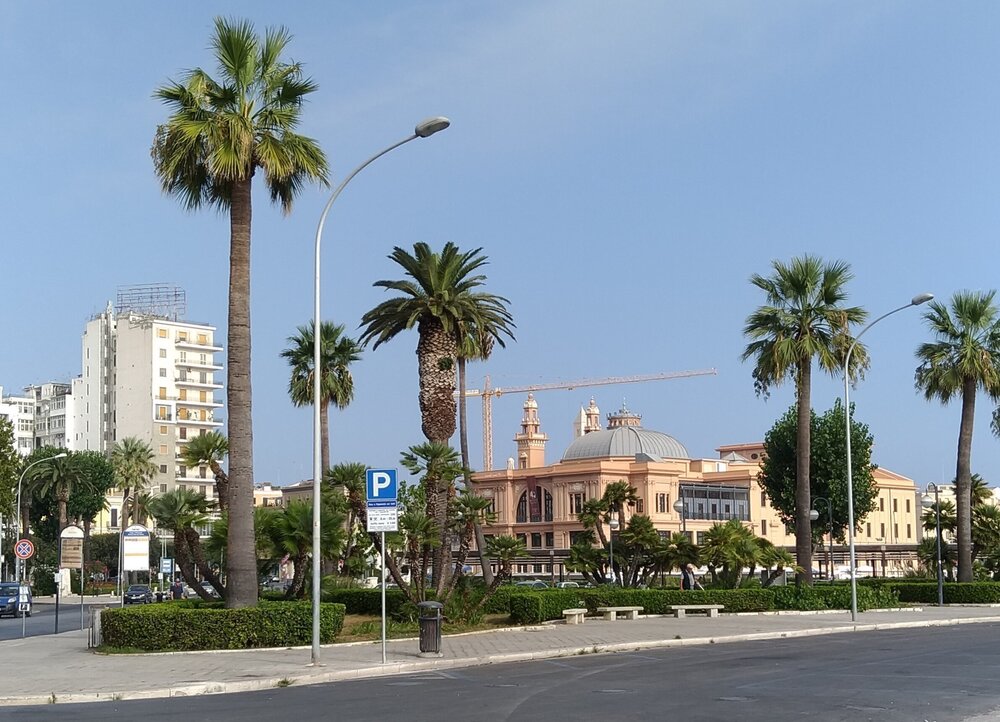
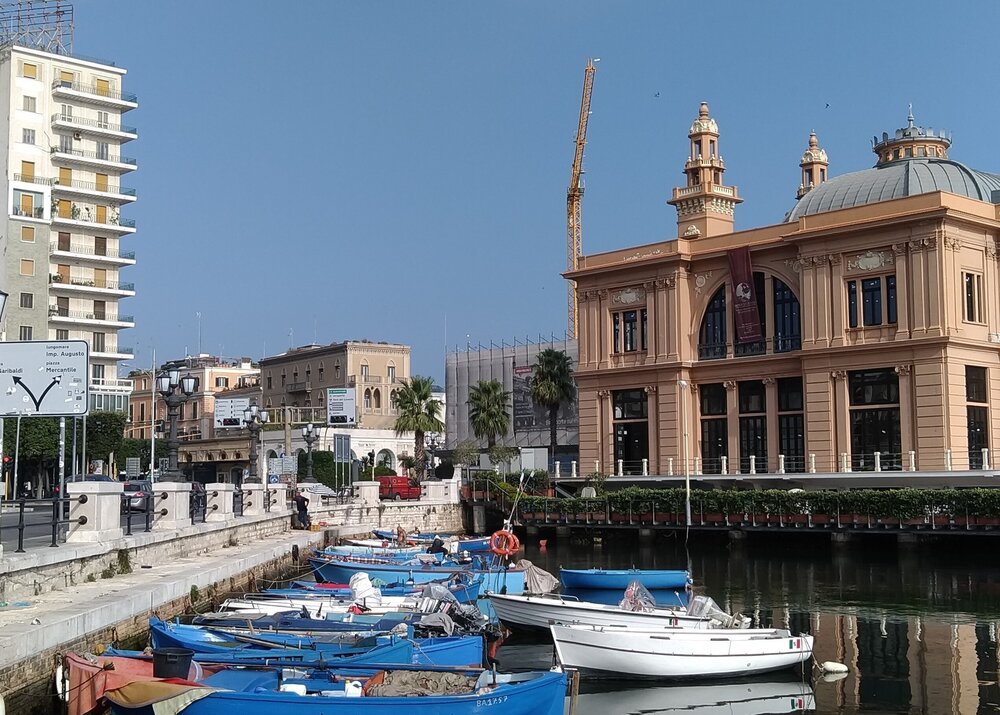
Market Square (Piazza Mercantile)
The Old Town has a market square, the Piazza Mercantile. As in the old, «pre-tourist» days, it is still a bustling social center. Now it’s mostly in cafes and restaurants. According to a hotelier I know, this is the place to go if you want to get a taste of Italy. The best cafes in the city with affordable prices will feed you both Italian dishes: pizza, risotto, gelato, cannoli, — and local, regional cuisine. Cafes and restaurants are open from 11:00 to 14:00, and then from 17:00 until midnight. It is rare to find an establishment open.
The Pillar of Shame in the center of the square is a reminder of the city’s past: the lion sitting at its base was once used to put bad debtors in jail. Naked.
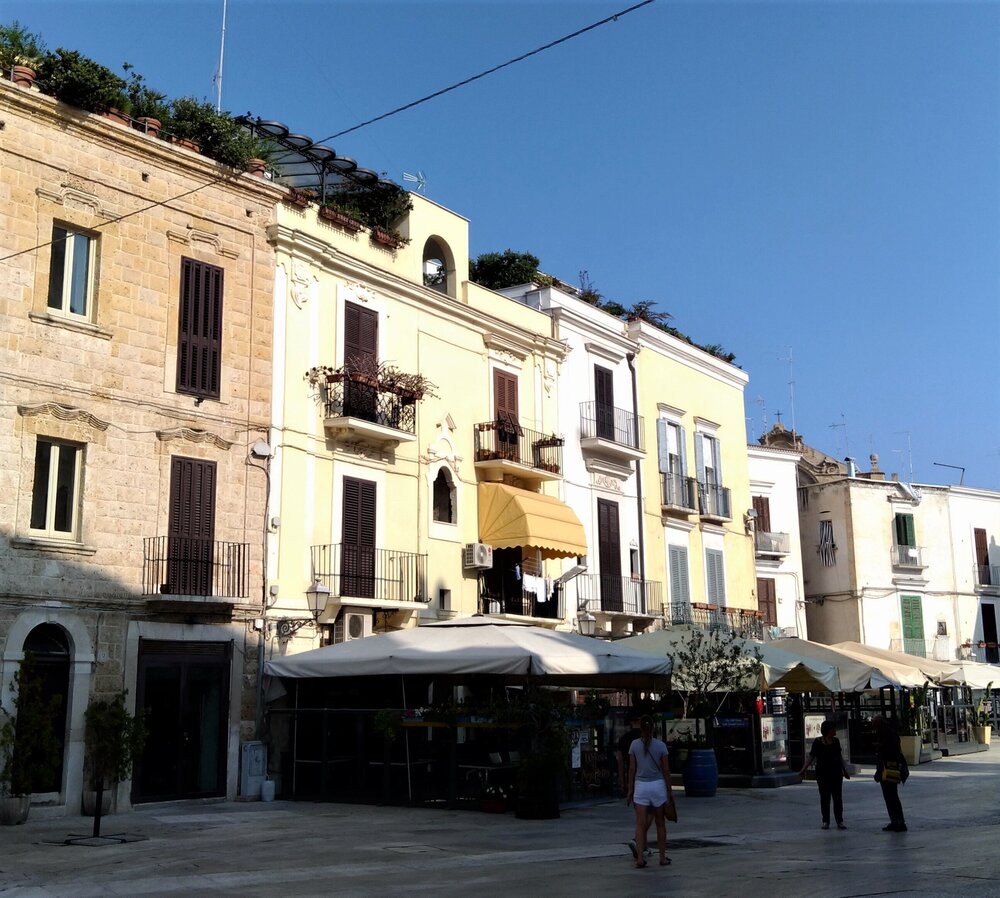
Nowadays, the narrow and winding streets of Barri Vecchia are atmospheric and a pleasure to get lost in. But in the old days, the Old Town protected the entire southern region from sea invaders. If the enemy overcame the fortress walls, he fell into a labyrinth of streets and squares. To avoid getting lost, the easiest way for a tourist to navigate is along the waterfront and the churches.
Il Fortino di Sant’Antonio (Fort of Sant’Antonio)
You can see the whole of Bari from the Fort of St. Antonio, a stone structure dating back to the 11th century. It is the highest point of the Old Town. Once there were four forts around the city and they were part of the defense walls. Now only this structure remains. The fort can be reached via Via Venezia or Via Re Manfredi.
The entrance to the fort is closed by an iron gate, but this does not prevent you from seeing the city. The wall offers a panorama of the Adriatic Sea, Emperor Augustus' promenade, the port, the Old Town and the New Town. On holidays, the gates are open, but such moments are very rare. For example, on Christmas Day, the picture of the three wise men offering gifts to the baby Jesus is reconstructed on a small platform.
Cathedral of San Sabino (Cattedrale di San Sabino)
The Duomo of Bari, an architectural monument of the XII–XIII centuries, which houses the relics of St. Savin and the icon of the Madonna Hodegetria. The first thing that catches your eye is the round window-socket on the facade with mythical animals above it. According to history, they are there to guard the structure from evil spirits.
Once a year, on June 21, the day of the summer solstice, the rays of the sun passing through the rosette illuminate the exact same rosette on the floor inside the temple. The rosette-window and the rosette on the floor are completely identical in shape and size. The Italians say that on this day «the sun kisses the earth».
The original icon of Our Lady of Hodegetria (Guide) from Constantinople is kept in the Cathedral. According to legend, this icon was painted by the Evangelist Luke, who personally saw the Mother of God. Under the icon lie the relics of St. Sabin (Savin of Kanoz), revered by Catholics and Orthodox as a protector against poisons. According to legend, when an attempt was made to poison the old bishop, he did not die, but his poisoner did.
Church of St. Nicholas the Wonderworker (Basilica San Nicola)
The patron saint of Bari is St. Nicholas the Wonderworker. In the Old Town there is a basilica where his relics are kept. However, Bari has another small Chiesa russa di Bari — the Orthodox Church of St. Nicholas the Wonderworker. It is quite far from the historical center, and so that you do not get confused, our map shows both churches.
According to legend, in 1087 the relics of St. Nicholas were smuggled out of the city of Myra (modern Turkey), for which a building was built in advance. The Romanesque-style church is almost 1000 years old. and it is perfectly preserved. From the outside, it looks more like a castle than a temple. Inside, the XI–XII century interior and ceiling paintings are impressive.
St. Nicholas the Wonderworker is one of the most revered saints in the Catholic and Orthodox religions. Every day at 19:00 there is a Catholic service, after which access to the relics of St. Nicholas is opened, and on Thursdays the church holds Orthodox liturgies (in summer also on Tuesdays). Thousands of pilgrims from all over the world specially come here to lay their hands on the relics of St. Nicholas. You can do this at the end of the service.
- Sites: Basilica, Museum.
- Open: Basilica: Mon — Sat 7:00—20:30, Sun — 7:00—22:00; Museum — Mon-Fri 11:00—18:00.
- Orthodox Liturgy: Tues and Thurs, 10.30 a.m.
- Cost: Entrance to the church is free of charge. The entrance fee for an adult is 3 €, for a child 2,5 €.
Ruins of the church of Santa Maria del Buonconsiglio (Santa Maria del Buonconsiglio)
By chance, walking between the residential buildings of Old Bari, one comes across the ruins of the ancient temple of Santa Maria del Buonconsiglio. The structure was built between X and XII century. Unlike other temples, it has not been preserved: Roman columns and mosaic floor remained. The temple has an interesting history. Barians and Byzantines could not decide who would accompany brides to the altar. The conflict came to bloodshed, but both sides managed to reach a consensus and in honor of this they erected a temple (Italian: buonconsiglio — correct advice).
Swabian Castle (Castello Normanno-Svevo)
The castle is a fortress built in 1131. It was destroyed several times and what we see now is a building from 1233, restored by Frederick II. The architecture of Bari is unique and this castle is no exception. Romanesque style, snow-white walls, which even now look impregnable. Inside there is a museum with the history of the city.
- Website: Swabian Castle
- Opening hours: 8:30-19-30, Tues — day off
- Cost: Admission 3 € for adults, 1,5 € for children
If you walk through Bari Vecchia, you reach the port of Bari. From here, the Emperor Augustus' promenade along the fortress walls leads to the New Town, where there is also much to see. Along the way, you’ll find the city beach, an ancient lighthouse, a fish market and several shady parks where tourists can hide from the scorching sun.
By the way, the promenade of Bari is the longest in Italy: its total length is 42 km, of which 15 km are within the city.
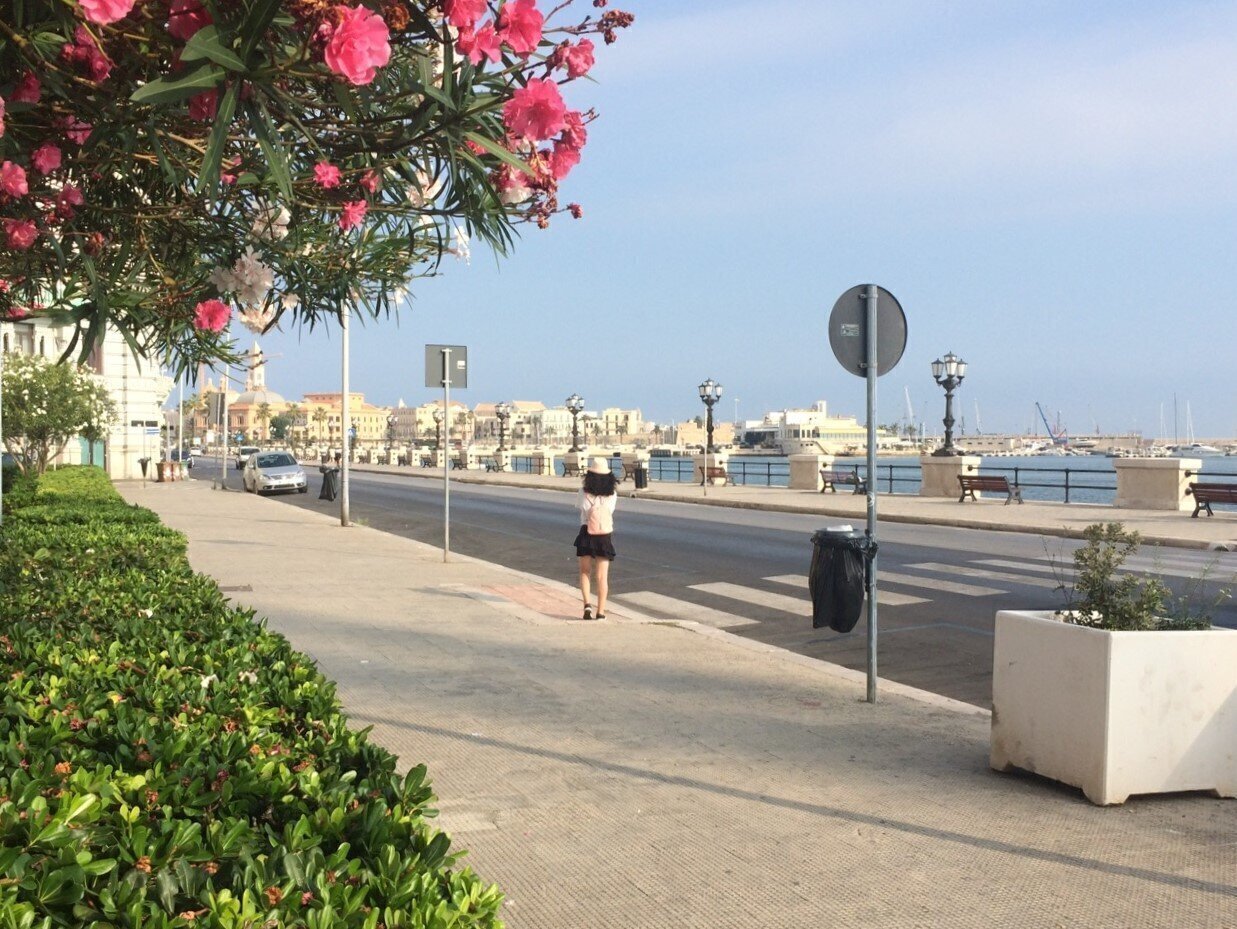
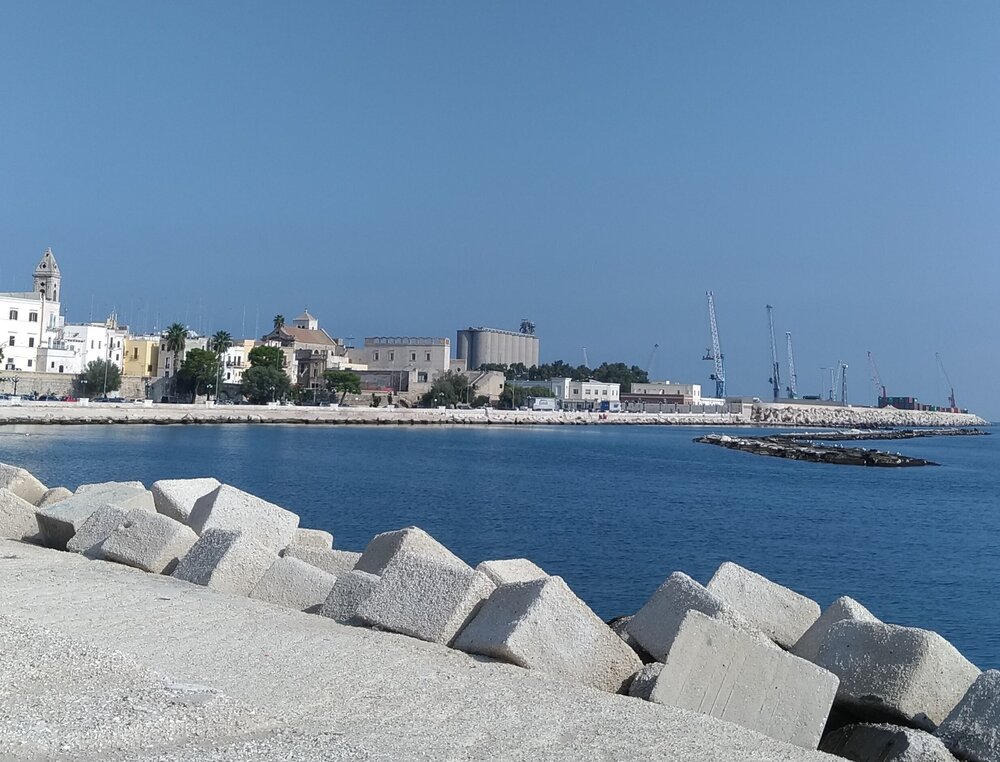
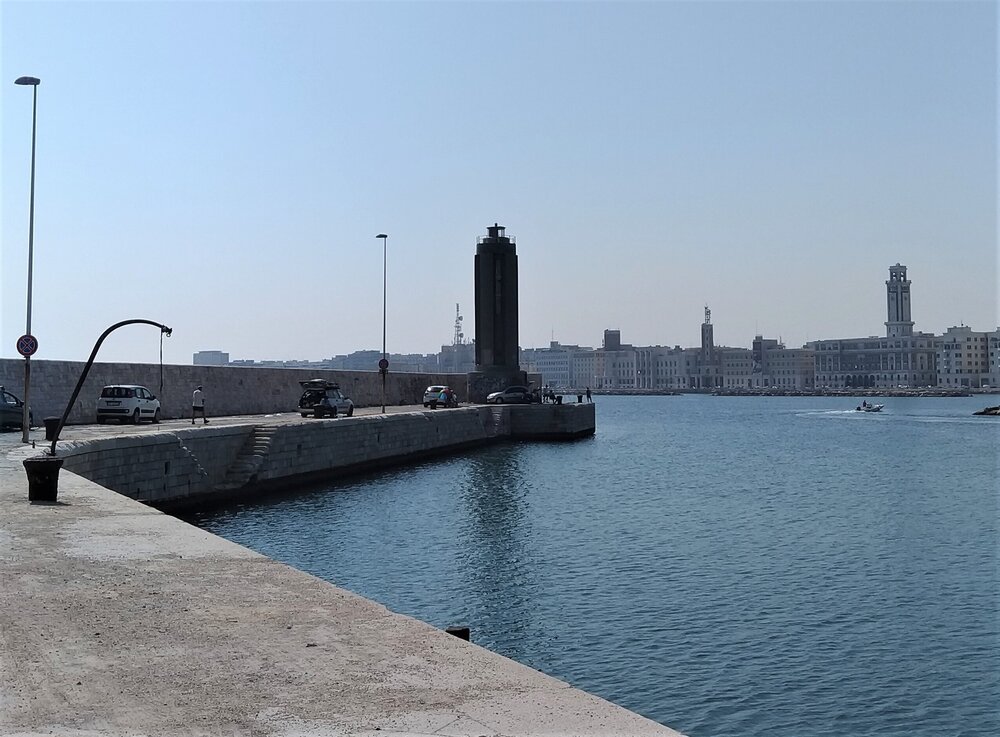
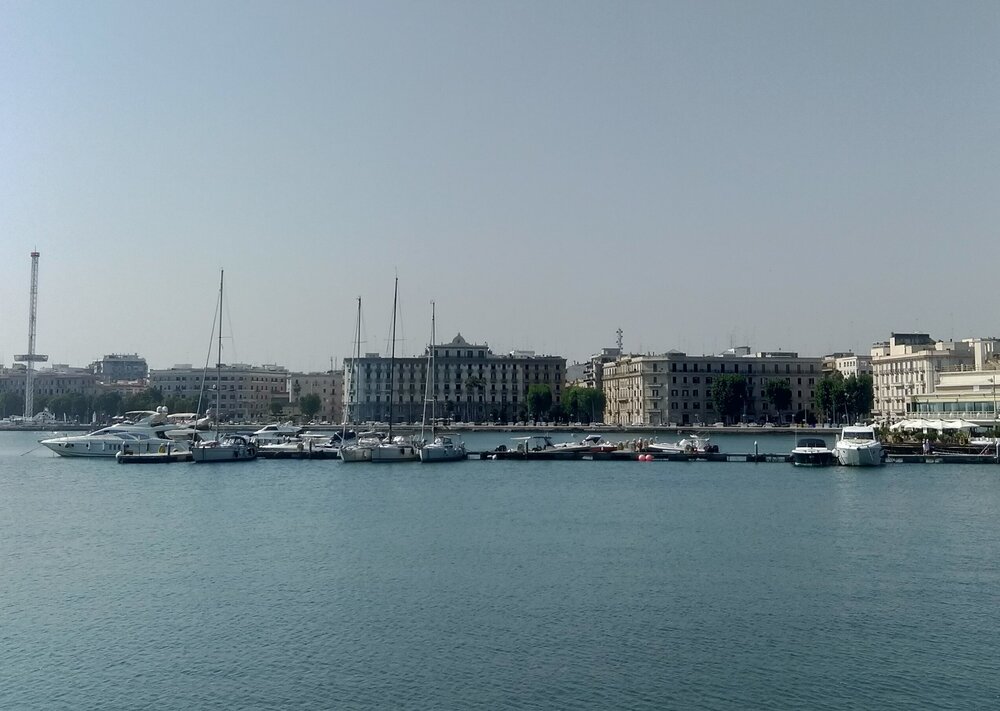
New Bari (Bari Murattiana)
The new part of the city was started to be built in 1819. Bari Murattiana differs significantly from Bari Vecchia. If in the Old Town the streets are narrow and confusing, here they are spacious and built strictly in straight lines. There is pompous architecture everywhere — palaces, theaters and stores.
In the New Town you will find incredibly beautiful buildings — palaces: Palazzo Mincuzzi, Palazzo Fizzarotti, Palazzo Apulia Aqueducta.
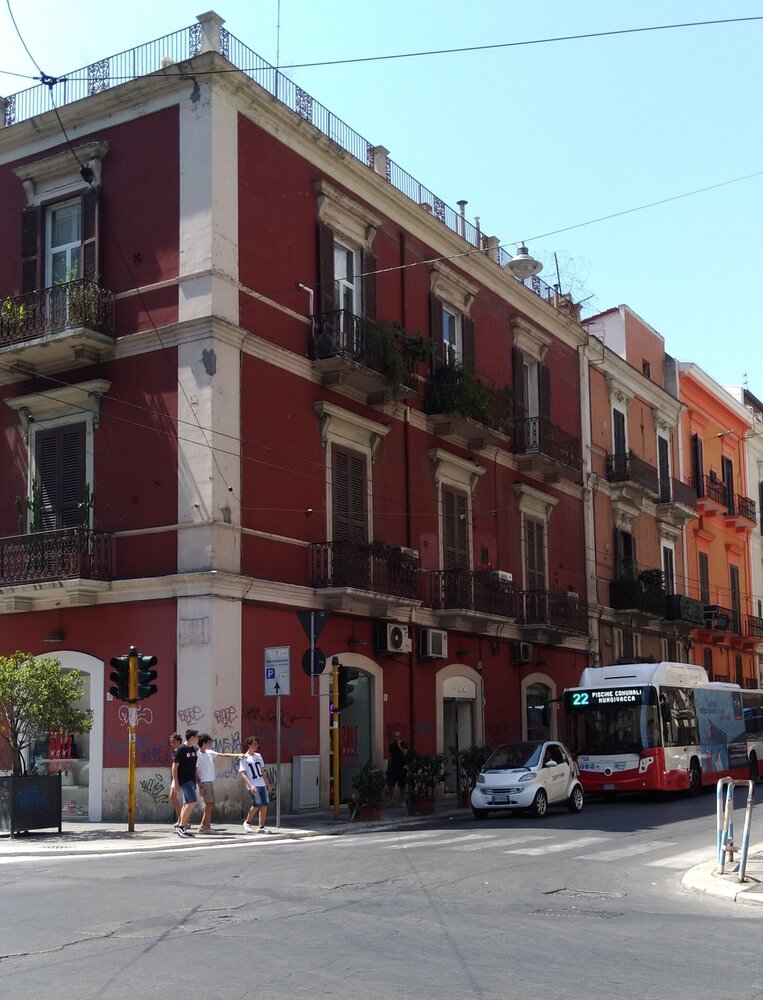
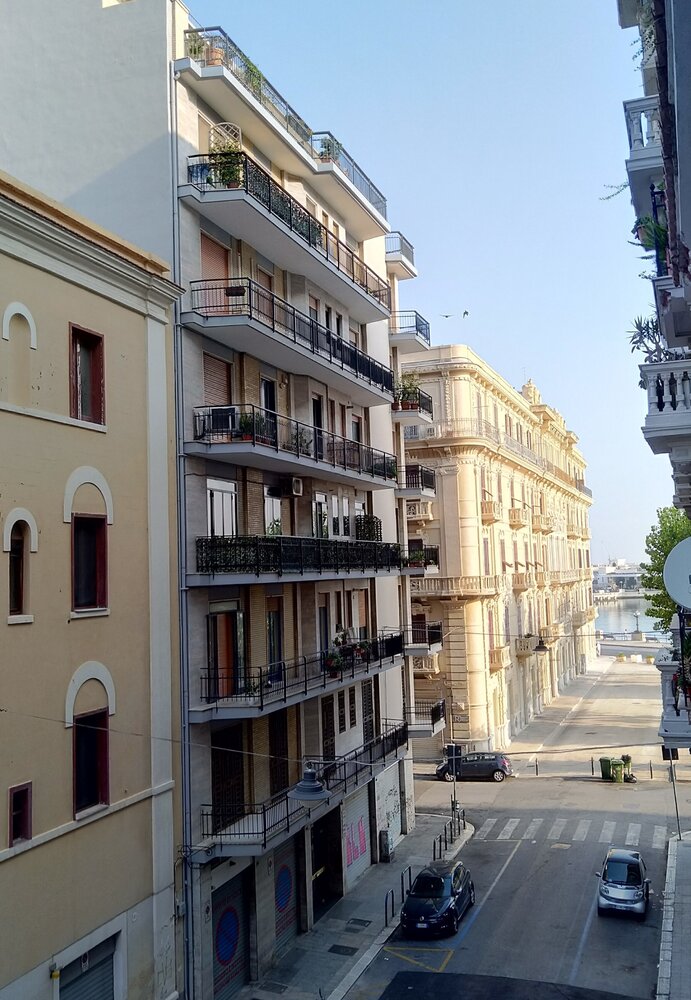
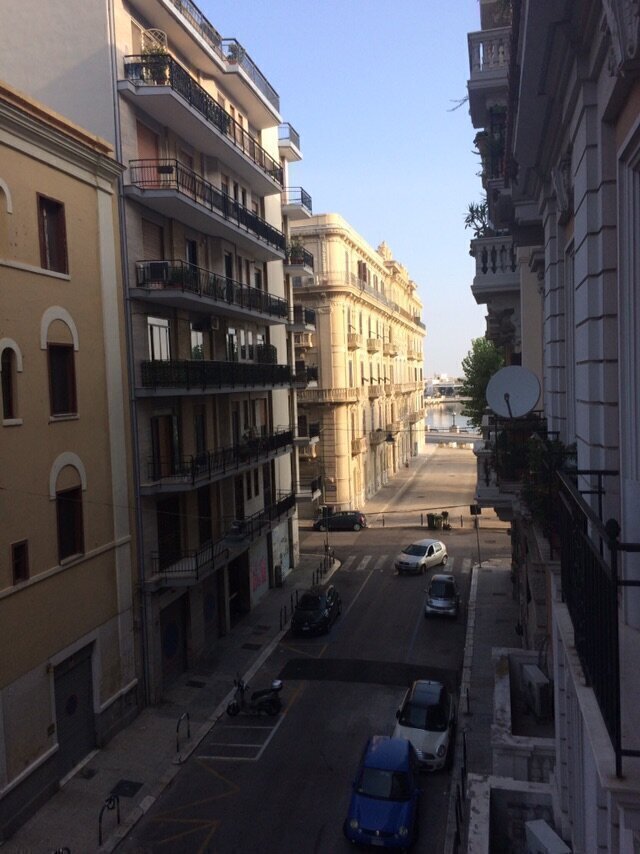
Finally, a building that is hard to miss: the Petruzelli Theater, an amaranth-colored historical monument. It is easy to recognize — it stands out from the rest. Inaugurated in 1903, it is considered the fourth largest theater in Italy. It hosts various events: you can catch a classical opera or a concert by a modern band.
- Website: Petruzelli Theater
Pinacoteca di Bari (Pinacoteca «Corrado Giaquinto» di Bari)
Stroll the streets, appreciate the Art Nouveau buildings, and if you like painting, check out the Pinacoteca Metropolitana art gallery. This place contains exhibits representing southern Italian art from the XI to XX centuries: paintings, fragments of buildings, sculpture. The museum building, built in the 19th century, is also a work of art.
- Website: Pinakothek
- Open: Tues-Fri 9:30—13:00 and 16:00—19:00
- Cost: adult ticket 3 €, child ticket 0,5 €
What else to do in Bari?
- Sunbathing on the beach of Pane e Pomodoro
- Try the local street food — sgagliozze — pieces of fried polenta.
- See how orecchiette pasta is made in the Old Town and try it with turnip sauce or broccoli and anchovies.
- Go to the nearby beach towns of Monopoli, Polignano a Mare, Trani.
- See with your own eyes the world-famous trulli houses in Alberobello.
- Drive to the rock-cut Matera, where Mel Gibson filmed The Passion of the Christ.
Useful links
- Bari Tourism Office on Facebook: Infopoint Turistico Bari
- Puglia Tourism Website: Portale ufficiale del turismo della regione Puglia

